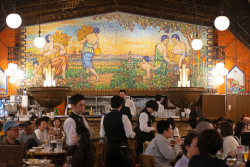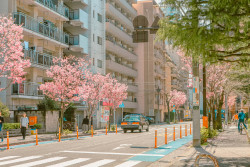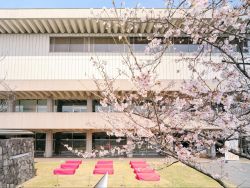
Originally published on metropolis.co.jp on November 2012


The past is another country, and one with extremely tight border controls. But occasionally a letter or postcard manages to slip out in the guise of a new archaeological discovery or theory, giving us insight into that mist-enshrouded realm. The exhibition now on at the Tokyo National Museum, “Treasures from Sacred Izumo,” is a collection of such insights. Added together they present an odd and interesting picture.
The show focuses on ancient Izumo, an area located in what is now eastern Shimane Prefecture. This has rich religious associations and was important in the foundation myths of early Japan recorded in the Kojiki (“The Record of Ancient Matters”), the oldest extant chronicle of Japan—1,300 years old this year!
Like a kind of Japanese Mount Olympus, the Izumo area is replete with divine associations and sites associated with the various Shinto gods. Most important is Izumo Grand Shrine. Along with Ise Jingu in Mie prefecture it is one of the holiest sites in Shinto. This exhibition suggests that it used to be even holier.
The centerpiece of the show is three giant fragments of cedar wood, excavated in 2000. These are the remnants of three great logs that were tied together to make one of the pillars supporting a truly remarkable structure that once existed on the site. Rising to a height of 48m, the pillars supported a shrine sacred to the god Okuninushi (Great Land Master). The shrine must have seemed to be floating in the tree tops. The exhibition includes an extremely impressive scale model of this “Sky Shrine.”
Izumo seems to have been an important political center of Japan later overcome by the Yamato state, perhaps sometime around the 3rd or 4th centuries. In compensation, Izumo was allowed to take on an important religious role until it gradually faded into a remote province. In the Kamakura period (1185-1333), the shrine became less important and was reduced in size, effectively coming down from the treetops.

Symbolizing Izumo’s earlier political prominence, the exhibition includes a great number of bronze swords excavated from a site at Kojindani in the 1980s. The number of swords found there exceeds the total number of bronze swords excavated throughout the whole of Japan to date. These date from the 2nd-1st century BCE, and are quite distinct in shape from later Japanese swords. At this site and one other a large quantity of ceremonial bells were also found.
Why so many of these objects were buried together is unknown. The way in which they were arranged suggests a cache, possibly even preparation for a rebellion, or perhaps the objects had gone out of use and were simply valued for their material, and buried for safekeeping.
The prominence given to the swords and bells, of which there are far too many, makes the exhibition slightly repetitive, but there are some other interesting objects, including some wooden statues of various deities, that present us with some faces from that “other country.”







